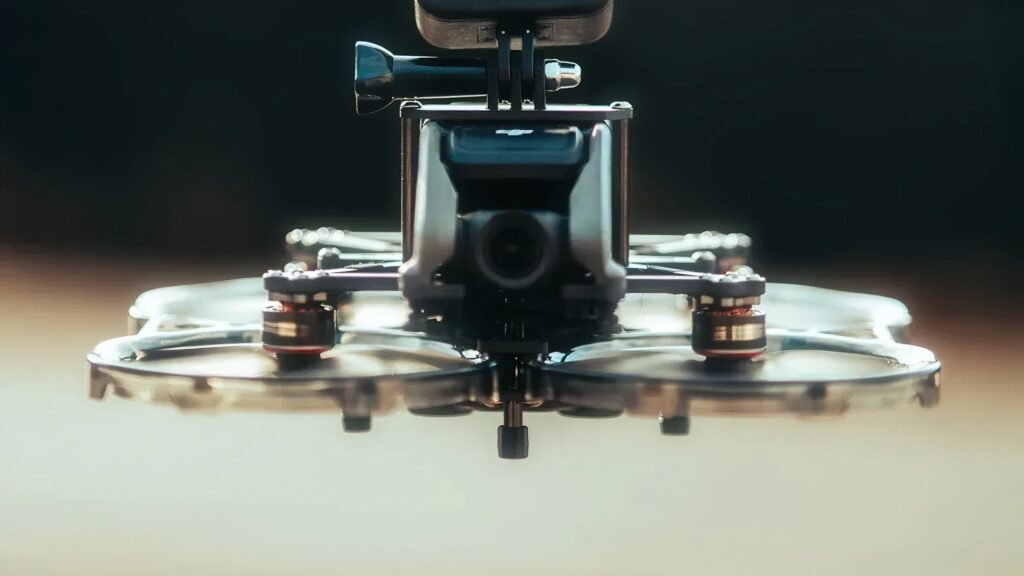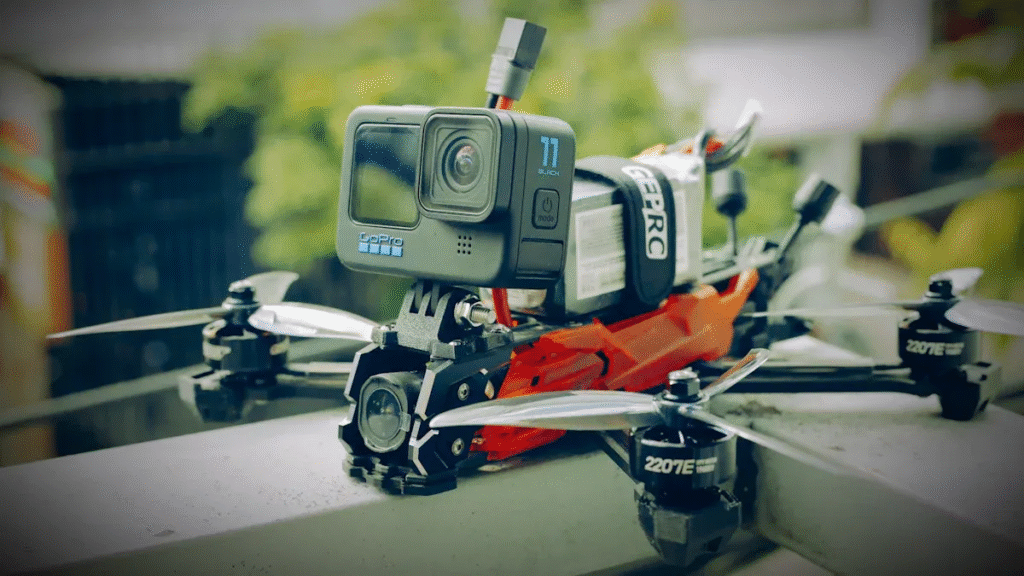Yes, brushless motors are generally quieter than brushed motors. You will notice less noise because these motors do not use brushes, which reduces friction and mechanical sounds. If you want a device that runs smoothly and quietly, you should consider this motor type. Many professionals and hobbyists choose brushless motors for their silent operation.
Key Takeaways
- Brushless motors run quieter because they have no brushes, which removes friction and scraping noises common in brushed motors.
- Electronic controllers in brushless motors provide smooth and precise operation, reducing vibration and electrical noise.
- Brushless motors avoid sparks and electrical interference, protecting nearby devices and creating a cleaner sound.
- Choosing brushless motors benefits noise-sensitive settings like drones, homes, offices, and medical equipment.
- Motor design, speed, and controller quality also affect noise levels, so consider these factors for the quietest performance.
Noise Sources

Brushes vs. No Brushes
When you compare brushed and brushless motors, the presence or absence of brushes makes a significant difference in noise levels. Brushed motors use carbon brushes that make direct contact with the commutator. This contact creates a constant scraping sound during operation. You will often hear a buzzing or crackling noise, especially as the brushes wear down. Brushless motors, on the other hand, do not use brushes at all. Instead, they rely on electronic circuits to control the motor’s rotation. This design eliminates the main source of mechanical noise, giving you a much quieter experience.
Friction and Vibration
Friction is a major contributor to noise in brushed motors. The physical contact between the brushes and the commutator not only causes wear but also generates vibration. You may notice that brushed motors feel rough or shaky when running. This vibration adds to the overall noise and can even shorten the motor’s lifespan. Brushless motors avoid this problem by using electronic commutation. Without brushes, there is no direct contact inside the motor, which means much less friction and vibration. As a result, you get smoother and quieter operation, making brushless motors ideal for noise-sensitive environments.
Tip: If you need a motor for a quiet workspace or a sensitive device, choose a brushless motor to minimize vibration and noise.
Electrical Noise
Brushed motors also create electrical noise. The sparks that occur when brushes touch the commutator generate electromagnetic interference. This interference can disrupt nearby electronics and add a high-pitched whine to the motor’s sound profile. Brushless motors eliminate this issue by removing the brushes and commutator. You benefit from reduced electrical noise, which helps protect other electronic devices and ensures a cleaner, quieter operation. This advantage becomes especially important in applications where electronic interference must be kept to a minimum, such as in medical equipment or precision tools.
Brushless Motors: Why Quieter
Electronic Control
You benefit from electronic control in brushless motors because it replaces the old mechanical switching found in brushed designs. Instead of brushes and commutators, you get advanced electronic speed controllers (ESCs) that use digital logic to manage the motor’s rotation. These controllers use precise timing to energize the stator windings, which leads to smoother and quieter operation.
- ESCs often use sensor-based or sensorless methods, such as back-EMF sensing, to control the motor’s position and speed.
- Digital signal processors (DSPs) in modern controllers help reduce switching noise and improve the smoothness of motion.
- Micro-stepping and sinusoidal drive techniques further lower vibration and audible noise.
- By avoiding mechanical switching, you avoid the buzzing and crackling sounds common in brushed motors.
Note: Electronic control not only reduces noise but also increases efficiency and extends the life of your motor.
No Mechanical Contact
You notice a big difference in noise levels because brushless motors do not have brushes or commutators. The absence of these parts means there is no physical contact inside the motor, which removes the main source of friction and mechanical noise. Permanent magnet rotors spin freely, and high-quality bearings keep everything aligned and balanced.
- No brushes means no scraping or rubbing sounds.
- Precision machining and dynamic rotor balancing during manufacturing ensure minimal vibration.
- High-precision shafts and balanced components prevent small errors that can cause noise.
- Testing before delivery confirms that reduced mechanical contact leads to lower vibration and quieter operation.
This design gives you a motor that runs smoothly and quietly, even at high speeds. You also spend less time on maintenance because there are fewer parts that wear out.
Reduced Arcing
You avoid electrical arcing when you choose brushless motors. In brushed motors, the contact between brushes and the commutator creates sparks, which generate both electrical and audible noise. These sparks can interfere with nearby electronics and add a high-pitched whine to the sound profile.
- Brushless motors eliminate arcing by removing the brushes and commutator.
- Electronic controllers precisely manage current flow, so you get smooth rotation without sparks.
- The lack of arcing means less electromagnetic interference, which protects sensitive devices around your motor.
Tip: If you need a motor for environments where electronic interference or noise is a concern, brushless motors are the best choice.
Why Brushless Motors Run Quieter
You get quieter performance from brushless motors because of three main reasons:
- The lack of brushes removes friction and mechanical noise.
- Permanent magnet rotors and advanced electronic controllers ensure smooth, precise operation.
- The absence of arcing and reduced electrical noise protect your devices and keep your workspace peaceful.
These features make brushless motors ideal for applications where quiet operation matters, such as drones, medical equipment, and office tools.
Noise Factors
Speed and Air Resistance
You will notice that speed plays a major role in how much noise a motor produces. As the rotational speed of a motor increases, the sound power level rises sharply. For example, industrial motors running near 10,000 rpm can reach sound levels as high as 130 dB(A). This increase happens because faster-moving parts disturb the air more, creating turbulence and noise. Air resistance also adds to the noise, especially in applications like fans or propellers. When you use a fan with higher speeds, the blades cut through the air more aggressively, which leads to louder operation. The shape and number of blades matter as well. Studies show that fans with five blades tend to be quieter and more stable than those with three blades, due to better weight balance and aerodynamics. Materials like wood or ABS plastic can also help reduce noise compared to metal blades.
Tip: If you want a quieter setup, choose lower speeds and consider blade design and material.
Motor Design
Motor design affects noise in several ways. Larger brushless motors and inrunner types usually run quieter because they operate at lower speeds and have better internal balance. The way the blades are shaped and attached to the motor also changes the sound profile. Research on propeller design shows that increasing the number of blades can shift noise from a sharp, tonal sound to a softer, broadband noise. Adjusting blade chord and solidity can further influence noise patterns. You should also pay attention to resonance and vibration, as poorly balanced components can create extra noise.
Controller Quality
Controller quality has a direct impact on how quietly your motor runs. High-quality controllers, especially those using Field Oriented Control (FOC), help reduce noise by generating smooth, sinusoidal current waveforms. FOC minimizes torque ripple and vibration, which leads to quieter and more stable operation. Users have found that tuning the controller’s PID loops can further lower noise, especially at low speeds. Some advanced controllers even offer features like soft start and closed-loop speed control to optimize noise performance. When you pair brushless motors with a top-tier controller, you get the quietest and most efficient results.
Quiet Applications

Drones and RC
You will find that quiet operation is essential in drones and RC models. Brushless motors have become the standard in these devices because they run with minimal noise. This low noise level allows you to enjoy flying or driving without disturbing others or drawing unwanted attention. The XTO4014 motor, for example, demonstrates how advanced engineering leads to quiet and efficient performance.
| Parameter | Details |
|---|---|
| Model | XTO4014 |
| KV Rating | 330KV (330 RPM per volt at no-load) |
| Maximum Power | 750W |
| No-load Current | 0.7A (at 10V) |
| Resistance | 104mΩ |
| Efficiency Range | 5.32 – 10.24 grams per watt |
| Dimensions | Diameter 44.7mm × Length 30.5mm |
| Weight | Approximately 166g |
| Structural Features | High-quality magnetic steel, precision winding, low noise, high durability |
| Application Fields | Drones, RC models, robots, power tools |
You benefit from a brushless design that eliminates brushes and commutators, which significantly reduces running noise. This makes your drone or RC model suitable for use in parks, schools, or even indoors.
Home and Office
You want your home and office to remain peaceful. Brushless motors help achieve this by removing the noise caused by brush friction and electrical sparks. These motors power many household appliances, such as washing machines, vacuum cleaners, and refrigerators.
| Application Area | Usage Percentage | Additional Notes |
|---|---|---|
| Household Appliances | ~28% | Washing machines, vacuum cleaners, refrigerators |
| Premium Appliance Brands | >43% | Brands shifting to brushless motors for durability and low maintenance |
Many premium appliance brands now use brushless motors for their durability and quiet operation. You will notice fewer disturbances during daily activities, making your environment more comfortable. These motors also last longer and require less maintenance, which saves you time and effort.
Medical and Tools
You need quiet equipment in medical and precision tool settings. Brushless motors operate more quietly than brushed motors because they lack brushes, which means less electrical noise and interference. This quiet operation is critical in hospitals, dental offices, and laboratories, where a calm environment supports patient care and concentration. You also see these motors in power tools, where low noise improves user comfort and safety.
Tip: Choose brushless motors for medical devices and tools when you need reliable, quiet, and efficient performance.
You gain quieter performance because these motors remove brushes and commutators, which eliminates friction and arcing noise. Electronic controllers manage current flow precisely, so you experience smooth rotation and minimal vibration.
- No mechanical contact parts means less wear and sustained quiet operation.
- Optimized designs and noise-dampening materials absorb vibration and reduce sound.
- High efficiency reduces heat and the need for loud cooling.
Choose these motors for noise-sensitive environments. Always consider motor design, controller quality, and your application’s needs.




